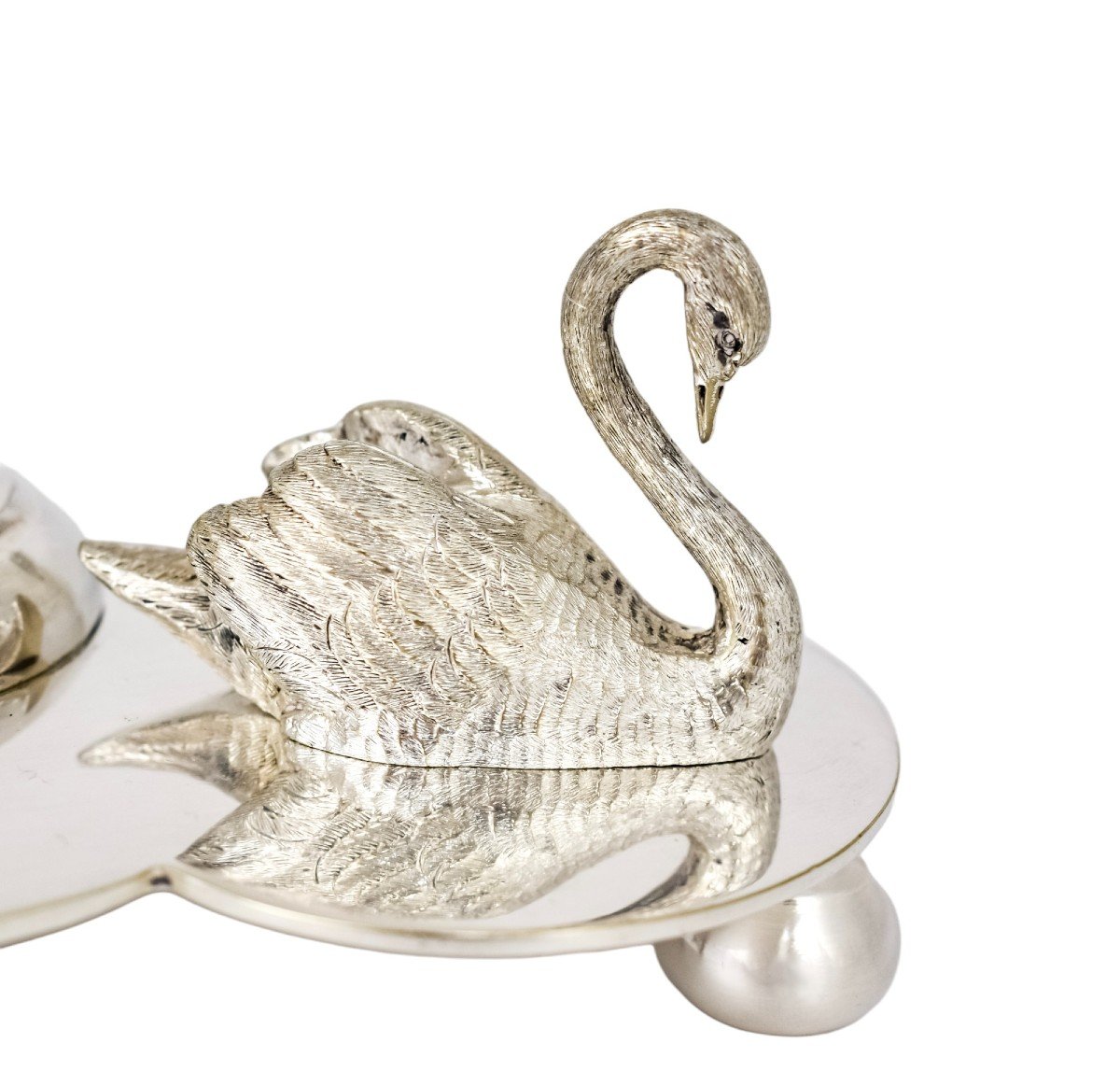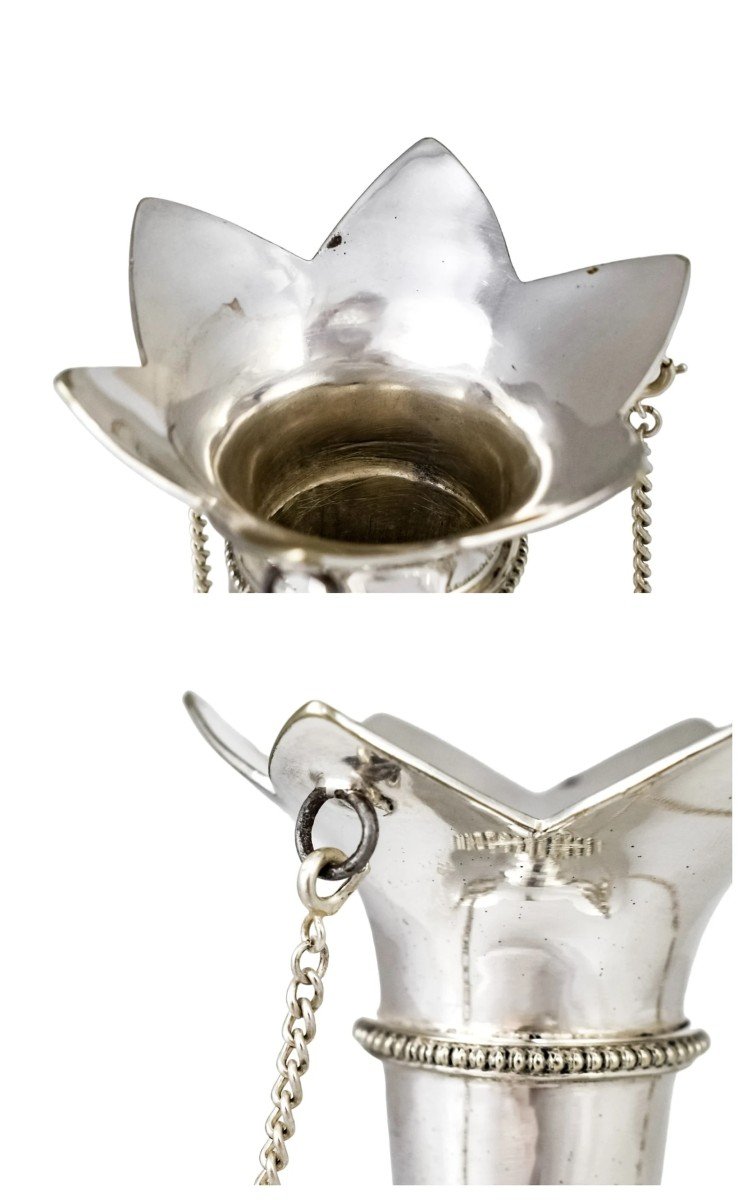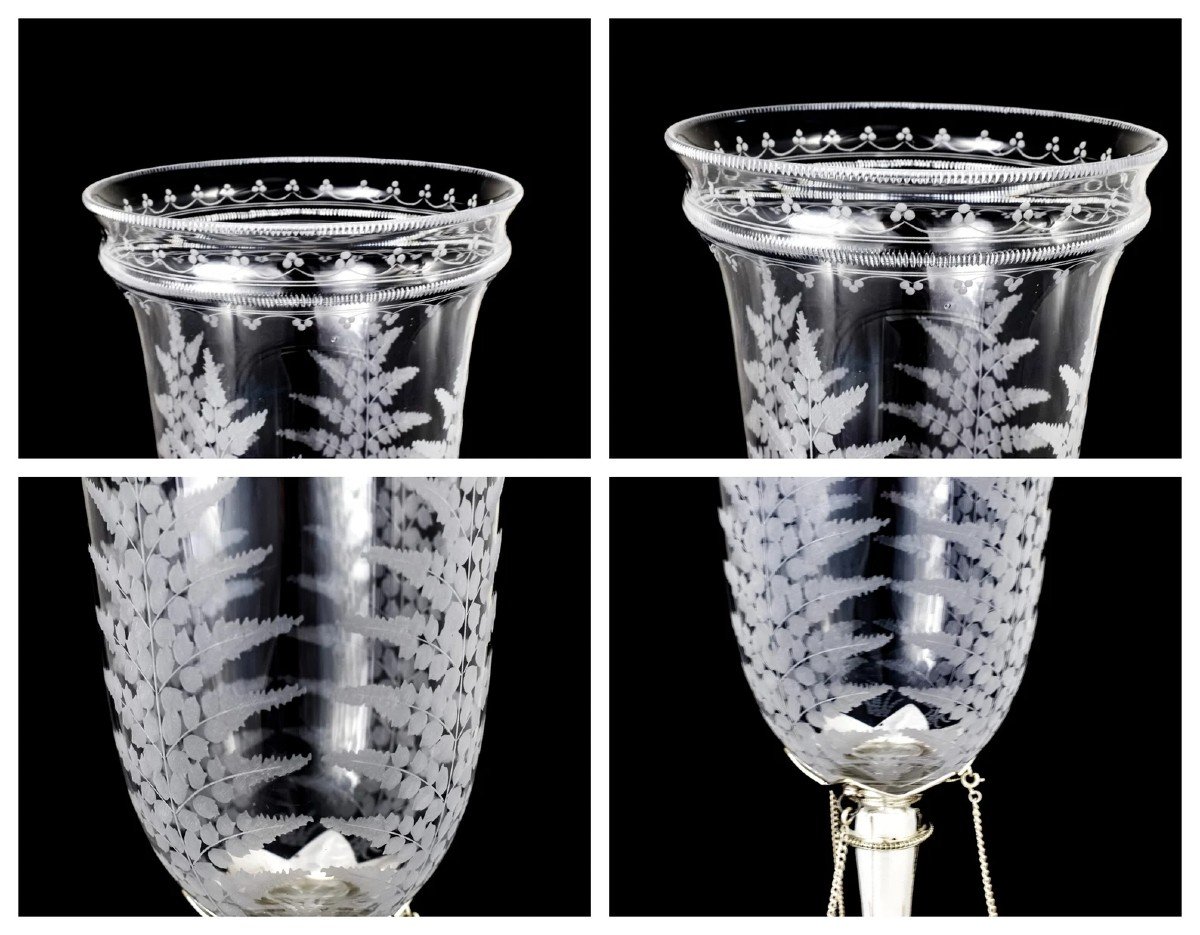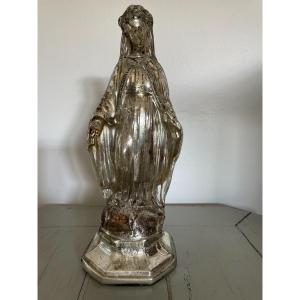The vase has an extended rounded bucket-shaped bowl with a ribbed girdle underneath the slightly flared everted rim that is cut with a reeded design. Wonderful crisp engraving of fern foliage all over, capturing the pteridomania of the period - the Victorian craze for using the fern motif on anything from wallpaper to gravestones.
The glass is supported by a silverplated trumpet vase with a beaded border and domed pedestal foot that rests on a trefoil stand raised on large ball feet.
Three figural swans guard each corner of the base, with removable cable chains extending from their necks to the top of the vase.
The birds' plumage is superbly detailed, with finely executed individual feathers. The brushed matte finish of the swans’ contrasts with the polished surface of the stand, making it look like they are reflected in the surface of a lake.
Fantastic piece from one of the most important silversmith companies in British history who held Royal Warrants to five British monarchs, the Russian Imperial family and created a solid silver bedroom service for an Indian Maharaja.
Developed during the Victorian era, celery vases displayed celery as centrepieces during meals. Introduced to England in the early 19th century, it was difficult to grow and was considered a luxury food item. Upper- and middle-class households would display their celery in special vases as dining table centrepieces, either as pure decoration or to accompany a celery dish.
Celery vases were advertised in the US as early as 1801 and were common wedding gifts, with the newlyweds’ names engraved on the bottom.
Made by Mappin Brothers (precursor and contemporary of early Mappin & Webb), England, c. 1870's
1090 g
30.5 cm tall
12.5 cm diameter on top
14 x 14 x 14 cm at base
Excellent antique condition, no damage to glass. Tiny dark mark to rim; one chain absent catch on one end; light wear to silvering on base; very slight indent line to base.














































 Le Magazine de PROANTIC
Le Magazine de PROANTIC TRÉSORS Magazine
TRÉSORS Magazine Rivista Artiquariato
Rivista Artiquariato